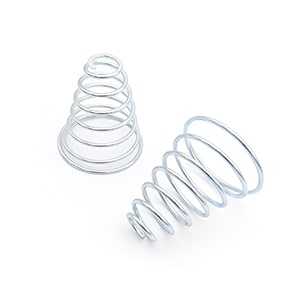Get unique, complex parts easily. No matter your requirements, Chaoyi Spring creates hard-to-produce coil springs and wire forms.
Let us help you create the custom wire form you need, from S-hooks and J-hooks to utility hooks and more.
We work closely with customers across a wide range of industries, helping them design and manufacture made-to-order parts.
Why choose Chaoyi Spring? We prioritize customer-focused collaboration, modern equipment and the latest technology to make your parts per print.
Find the information and guidance you need, from measuring a spring to learning about materials, placing an order and much more.
Torsional springs, often overlooked in the grand scheme of mechanical components, play a vital role in a vast array of applications. They are the unsung heroes of rotary motion, quietly


Torsional springs, often overlooked in the grand scheme of mechanical components, play a vital role in a vast array of applications. They are the unsung heroes of rotary motion, quietly and efficiently storing and releasing energy to ensure smooth and controlled movement. From the humble door hinge to the intricate workings of a complex machine, torsional springs are essential for achieving precise and reliable operation. This article delves into the fascinating world of torsional springs, exploring their unique characteristics, applications, and the factors that influence their performance.

Imagine a spring, not stretching or compressing in a linear fashion, but twisting and unwinding. That's the essence of a torsional spring. These springs are designed to store and release energy when subjected to a rotational force, making them ideal for applications involving rotary motion. They are typically made of spring steel, a material known for its resilience and ability to withstand repeated cycles of twisting and unwinding.
The key characteristic of a torsional spring is its spring constant, denoted by 'k'. This value represents the amount of torque required to twist the spring through a specific angle. A higher spring constant indicates that more torque is needed to achieve the same angle of twist. This relationship between torque and angle is linear within the spring's elastic limit. Beyond this limit, the spring might deform permanently, losing its ability to function properly.
Torsional springs, with their unique ability to control rotary motion, find a myriad of applications across diverse industries. Let's take a look at some of the most common areas where these springs make a significant contribution:
Think about the effortless opening and closing of doors and windows. That smooth movement is often facilitated by a hidden torsional spring within the hinges. These springs work tirelessly to counter the weight of the door or window, ensuring a consistent and controlled motion. This, in turn, enhances user comfort and safety, preventing sudden slams and accidental injuries.
In the automotive world, torsional springs play a crucial role in various components, including:
In the realm of industrial machinery, torsional springs are essential for a wide range of applications. They are used to provide:
Beyond these common uses, torsional springs find their way into a wide array of other applications, including:
The performance of a torsional spring is influenced by a number of factors, including:
Choosing the right torsional spring for a specific application is crucial for optimal performance and longevity. Here are some key considerations when selecting a torsional spring:
Torsional springs, despite their unassuming nature, are essential components in countless mechanical systems. Their ability to efficiently store and release energy during rotation makes them invaluable for achieving controlled and reliable movement. From the simple door hinge to intricate industrial machinery, these springs quietly contribute to a wide range of applications, making our lives smoother and our technologies more efficient. Understanding the characteristics, applications, and factors influencing their performance is key to selecting the right torsional spring for a specific application, ensuring optimal performance and longevity.
In conclusion, torsional springs, though often overlooked, play a critical role in a wide range of applications, silently enabling smooth and controlled rotary motion. Their unique ability to store and release rotational energy makes them indispensable in industries ranging from automotive to aerospace. By carefully considering the factors that influence their performance, engineers and designers can select the right torsional spring to ensure optimal operation and enhance the efficiency and reliability of their mechanical systems.
Browse some of the custom wire forms and springs that we manufacture. Don’t see what you need? We specialize in made-to-order products that meet your application requirements.
Visit Our GalleryNeed a custom wire form or coil spring? We make it work. Fill out the contact form and a representative will respond within 1 business day. If you have a PDF or CAD file, you can submit to request a quote.